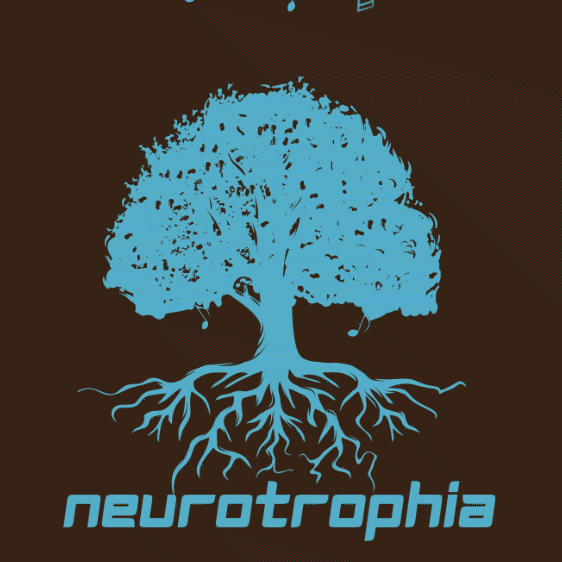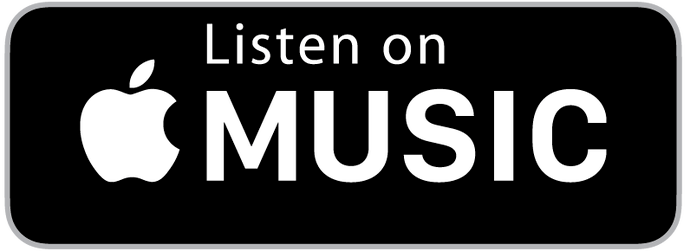
neuro: of the brain
trophic: the process of nourishment
Imagine there was a drug that made you feel incredible, lit up your reward circuits, flooded your brain with mood-boosting chemicals, improved mental and emotional well being, boosted learning, memory, and concentration, improved the health of brain tissue and even triggered the birth of new brain cells. And it had zero side effects.
Sounds too good to be true, right?
It is.
There is no drug that can do such a thing.
That’s the bad news.
The good news is we have something that can do all of that.
We call it…music.
And you can get all of those benefits even by just listening to it.
Music the only art form that we humans appreciate because of what it does to and for our brain.
For millennia, we’ve been exploring and exploiting these effects, learning how to tweak our music to produce different patterns of brain activity and states of mind. In recent decades, we’ve learned that those patterns of brain activity have far reaching benefits for the health and function of the brain.
Music is food for our brain.
And the music of Neurotrophia is hand-crafted to enhance its brain-boosting benefits.
THE MUSIC
The first Neurotrophia composition was released in March of 2023, and new ones will continue be released regularly. Follow Neurotrophia on Spotify, Apple Music, or your preferred streaming platform to keep track of new releases.
Below are the currently available tracks, along with the brain benefit it’s been optimized for (brain state change, neuronal stimulation, cognitive enhancement) listed.
#1: “The Mandalorian” Theme
- listen on Spotify, iTunes, Apple Music, Amazon, Pandora
- Optimization: Neuronal Stimulation
Questions about neurotrophia
It’s true, listening to music is very enjoyable. And it certainly doesn’t feel like work. But there are a couple of common misconceptions about how our brain works that help us understand why music is stimulating.
#1 – Your brain is “working” when you listen to music.
Whether you realize it or not, over the course of your life you have learned a particular system of music. A system that is organized in a particular way. And that organization produces all sorts of complex patterns in the sounds that you hear – patterns your brain has learned how to find. For those reading this, that system is most likely based on the 12 note chromatic scale of Western music.
This is no different than your native language, which is also organized in a particular way. To enjoy music, or to “understand” it, you first had to learn this system.
Yet, you probably never felt like you “learned” how to listen to music. That’s because all of that learning happened in brain networks that exist beneath your conscious awareness, when you weren’t actively “trying” to learn anything! In fact, almost everything you’ve ever learned (including your native language) happens in this way.
So, every time you listen to music, networks across your brain are busy analyzing these sounds, applying these rules and looking for patterns.
#2 – Pleasure is our brain’s way of rewarding us for doing things that are good for us.
The feeling of pleasure is generated by our brain. And our brain generates that feeling to motivate us to do more of the things that are good for it.
Yes, there are exceptions to this rule, but music is not one of them.
In fact, you could make a very strong case that the main reason we love music so much is because it’s so good for our brain. That listening to music nourishes our neurons, and the pleasure we feel is our brain’s way of telling us to keep feeding it!
Research has shown that listening to music activates neural networks across the cerebral cortex, or “lights up the whole brain.”
One way of describing music is as “patterned sound.” Sounds without patterns are what we call noise.
So, we like sound when it has patterns, and dislike it when it doesn’t.
Our entire cerebral cortex, the engine of our intelligence, is at its core an incredibly powerful system for identifying patterns in the information it processes.
The primary difference between one brain region and another is in the type of information that region processes (sounds vs. vision, for example), and the kinds of patterns that region has been trained to identify (letters, words, animal noises, etc.).
And music is patterns upon patterns upon patterns. Most of the time, the patterns our brain finds in the information it processes is helping to tell us something important about the world outside us – the pattern of light hitting our retina can be identified as a lamp, a desk, your mother’s face. A pattern of activation in the olfactory cortex can be identified as the smell of fresh baked bread, or of rotten fruit. The reason we care about these patterns is because of the information it contains about something else. The patterns represent something, which is what makes them useful.
Music, on other hand, doesn’t represent anything. Yet, not only does our brain care about those patterns, but it loves them! We know this because we love music. It’s been found in every human society, and we can’t seem to get enough of it.
All of which suggests that it’s the pattern detection itself that is beneficial.
As research has shown, music is highly stimulating to the brain.
And research has also shown that stimulation of this kind enhances the survival of and even triggers the birth of new nerve cells.
Our brain rewards us for providing this kind of nourishment by making the experience of listening to music very enjoyable.
Yes!
You probably know from experience that different kinds of music can you make you feel very differently, and produce very different brain states.
For example, you may have discovered that certain kinds of music can help you concentrate, while other kinds are distracting. Some kinds of music can lift your mood, or make you want to move. Likewise, different kinds of music will impact the health and function of brain tissue in different ways.
This is because different kinds of music activates different parts of the brain and different neurotransmitter systems.
As we learn more about the how the various features in music influence the brain, we can use this knowledge to enhance these effects in the music we create.
In fact, that’s what Neurotrophia is all about!
Above all else, the primary goal of Neurotrophia is to make music that you love to listen to. As mentioned, the pleasure you experience from music is directly correlated to its benefit to your brain, so optimizing for pleasure is priority number one!
Beyond that, each track has features that amplify a particular effect on the brain. Those effects can be grouped into 3 broad categories.
Category 1: Brain State Changes
Music has the unique ability to produce rapid and sustained alterations in global patterns of brain activity, which is one reason why it can so profoundly influence our mental and emotional state.
As a result, music can be used to both promote desired brain states (and thought patterns) and to suppress undesired ones. This includes inducing brain states that promote:
1) Relaxation. Music that activates the parasympathetic nervous system (“vagal tone”) while suppressing the sympathetic nervous system.
2) Elevation. Music that promotes elevated mood and sense of well being, while suppressing states associated with fatigue, lethargy, and emotional distress.
3) Meditation. While related to relaxation in some ways, meditation is a unique brain state, as research shows that experienced meditators demonstrate a distinct signature of cortical activity. It is likely that these brain states yield the unique health benefits of meditative practice.
Yet, many find it challenging to reach the meditative state through quiet contemplation. Music that’s tailored to promote the meditative state can make it much easier to do so. In fact, humans have been using ritualistic music and dance for this very purpose for millennia.
Category 2: Neuronal Stimulation
Providing our brain stimulating cognitive activities is arguably the single most impactful way to improve brain health and fitness and to prevent age-related cognitive decline and dementia. And listening to music is arguably the most enjoyable way to provide that stimulation (as stated, it’s likely that the brain-nourishment it provides is the very reason we enjoy it!).
As a general rule, the amount of stimulation increases as a function of the complexity of the music, or the amount of information (rhythmic, harmonic, melodic) it contains, provided that information can be decoded by the listener.
A large body of research clearly shows that this sort of cognitive stimulation causes the brain to release substances that not only enhance the health and function of existing neurons (brain cells), but that promote the birth of new ones.
Category 3: Cognitive Enhancement
Music of various kinds can not only improve the health and function of the brain over long term, it can also enhance cognitive function in the short term in specific ways. Research has shown that music can promote immediate or short-term enhancements in things like attention and concentration, problem solving, learning, and memory.
Again, the specific effects are linked to certain features in music, affording us the ability to tailor musical compositions in ways that promotes those effects.
You’ll get the most out of listening to these if you have good stereo separation. So, listening with headphones or earbuds is ideal, and listening on stereo speakers is the next best option.
While informed by the latest neuroscience research and utilizing modern production tools, the music is composed by the human mind and performed by human hands. 🙂
Selected References
Fukui, Hajime, and Kumiko Toyoshima. 2008. “Music Facilitate the Neurogenesis, Regeneration and Repair of Neurons.” Medical Hypotheses 71 (5): 765–69.
Koelsch, Stefan, and Stavros Skouras. 2014. “Functional Centrality of Amygdala, Striatum and Hypothalamus in a ‘Small-World’ Network Underlying Joy: An fMRI Study with Music.” Human Brain Mapping 35 (7): 3485–98.
Koelsch, Stefan. 2020. “A Coordinate-Based Meta-Analysis of Music-Evoked Emotions.” NeuroImage 223 (December): 117350.
Koelsch, Stefan, Stavros Skouras, Thomas Fritz, Perfecto Herrera, Corinna Bonhage, Mats B. Küssner, and Arthur M. Jacobs. 2013. “The Roles of Superficial Amygdala and Auditory Cortex in Music-Evoked Fear and Joy.” NeuroImage 81 (November): 49–60.
Mavridis, Ioannis N. 2015. “Music and the Nucleus Accumbens.” Surgical and Radiologic Anatomy: SRA 37 (2): 121–25.
Steen, Jenny T. van der, Mirjam C. van Soest-Poortvliet, Johannes C. van der Wouden, Manon S. Bruinsma, Rob Jpm Scholten, and Annemiek C. Vink. 2017. “Music-Based Therapeutic Interventions for People with Dementia.” Cochrane Database of Systematic Reviews 5 (5): CD003477.
Witte, Martina de, Anouk Spruit, Susan van Hooren, Xavier Moonen, and Geert-Jan Stams. 2020. “Effects of Music Interventions on Stress-Related Outcomes: A Systematic Review and Two Meta-Analyses.” Health Psychology Review 14 (2): 294–324.
Xu, Bing, Yi Sui, Chunyan Zhu, Xiaomei Yang, Jin Zhou, Li Li, Li Ren, and Xu Wang. 2017. “Music Intervention on Cognitive Dysfunction in Healthy Older Adults: A Systematic Review and Meta-Analysis.” Neurological Sciences: Official Journal of the Italian Neurological Society and of the Italian Society of Clinical Neurophysiology 38 (6): 983–92.
Moore, Kimberly Sena. 2013. “A Systematic Review on the Neural Effects of Music on Emotion Regulation: Implications for Music Therapy Practice.” Journal of Music Therapy 50 (3): 198–242.
Finn, Saoirse, and Daisy Fancourt. 2018. “The Biological Impact of Listening to Music in Clinical and Nonclinical Settings: A Systematic Review.” Progress in Brain Research 237 (May): 173–200.
Koelsch, Stefan, Julian Fuermetz, Ulrich Sack, Katrin Bauer, Maximilian Hohenadel, Martin Wiegel, Udo X. Kaisers, and Wolfgang Heinke. 2011. “Effects of Music Listening on Cortisol Levels and Propofol Consumption during Spinal Anesthesia.” Frontiers in Psychology 2 (April): 58.


